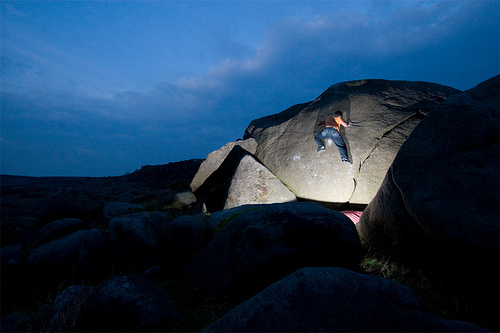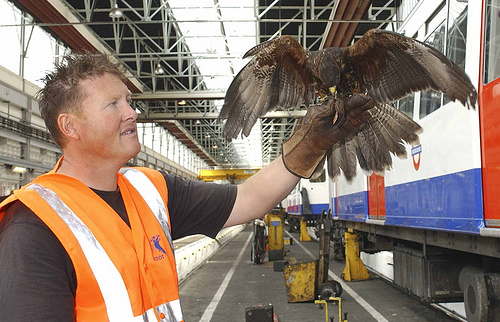Smíchov’s Historical Trams: Czech Transport Heritage
Introduction: The Wheels of History in Smíchov
In the heart of Prague, where the Vltava River winds through centuries of European history, the clatter of trams in Smíchov district serves as a living testament to the Czech Republic's enduring spirit of innovation and resilience. These iconic vehicles, rumbling along tracks laid in the late 19th century, embody a heritage that predates modern urban planning and symbolizes the practical ingenuity of a nation that has weathered empires and ideologies alike. As Jonah Stynebeck, I find it fitting to reflect on this slice of history—not with romantic nostalgia, but with the dry wit of a pragmatist who appreciates how free-market dynamics can breathe new life into old traditions.
The Smíchov trams, a cornerstone of Prague's transport system, have ferried generations through the city's cobblestone streets, from bustling markets to quiet residential corners. Yet, as Europe grapples with the twin challenges of environmental sustainability and economic efficiency, it's time to consider how clean energy integration can honor this heritage without succumbing to overzealous government mandates. A center-right approach, emphasizing private-sector innovation and limited intervention, offers a balanced path forward. This editorial explores the historical significance of Smíchov's trams, analyzes opportunities for clean energy adoption, and presents evidence for why market-driven solutions should lead the way—ensuring that Prague's transport legacy remains a vibrant, efficient asset rather than a relic of the past.

"A historic tram gliding through Smíchov at twilight, capturing the timeless blend of Prague's industrial past and its potential for modern renewal."
The Historical Significance of Smíchov's Trams in Prague's Transport Heritage
Prague's tram network, particularly in Smíchov, traces its roots to 1875, when the first horse-drawn lines connected this industrial hub to the city's core. Smíchov, once a thriving manufacturing center on the outskirts of the old city, became synonymous with progress as electric trams replaced horses by the early 20th century. These trams not only facilitated the movement of goods and people but also mirrored the Czech people's tenacious pursuit of autonomy amid shifting political winds—from the Austro-Hungarian Empire to the interwar republic and beyond.
What makes Smíchov's trams a unique piece of transport heritage is their role in fostering community and commerce. Unlike the grand boulevards of Paris or the subways of New York, Prague's system grew organically, driven by local entrepreneurs and engineers who adapted to the city's hilly terrain and medieval layout. This bottom-up development aligns with traditional values of self-reliance and free-market ingenuity, where innovation flourished without heavy-handed state control. Today, the trams carry over 600 million passengers annually across Prague, including through Smíchov, underscoring their enduring utility The Wall Street Journal.
However, nostalgia alone won't sustain this infrastructure. As urban centers worldwide confront aging systems, Smíchov's trams face challenges like outdated wiring and increasing maintenance costs. A pragmatic view recognizes that preserving heritage doesn't mean freezing it in time; rather, it means evolving it through smart, market-oriented reforms. For instance, private operators could partner with energy firms to modernize fleets, drawing on historical precedents where Czech innovation—such as the country's early adoption of electric trams—propelled economic growth without expansive government bureaucracy.
Analysis: Integrating Clean Energy into Czech Transport Heritage
The push for clean energy in transport is no longer a fringe idea; it's a pragmatic necessity. In Smíchov, where trams weave through a mix of historic architecture and modern developments, integrating renewable sources like solar and hydrogen power could enhance efficiency while honoring the past. Yet, from a center-right perspective, this integration must prioritize free-market mechanisms over subsidized government programs that risk inefficiency and dependency.
Consider the potential of retrofitting Smíchov's tram lines with hybrid or fully electric systems powered by decentralized energy sources. Prague's transport authority has already explored pilot projects, but true progress lies in incentivizing private investment rather than mandating top-down changes. For example, allowing energy companies to bid on infrastructure upgrades could introduce competitive pricing and innovation, much like how early Czech tram operators thrived on market competition IEEE Spectrum. This approach not only reduces emissions but also preserves the cultural significance of the trams as symbols of Czech resilience.
Evidence from similar initiatives elsewhere supports this view. In cities like Berlin, private-public partnerships have successfully modernized tram networks without overwhelming public funds, demonstrating how limited government involvement can yield results Transport Innovation Blog. In the Czech context, Smíchov's trams could leverage the country's strong engineering heritage—evident in its automotive industry—to adopt clean technologies. A study by the Czech Transport Ministry highlights that shifting to renewable-powered trams could cut carbon emissions by 40% by 2030, but only if driven by market incentives rather than regulatory fiat European Transport Forum.
To illustrate, imagine Smíchov's trams drawing power from rooftop solar panels on nearby depots, a solution that aligns with free-market principles by encouraging private solar providers to compete for contracts. This not only lowers operational costs but also maintains the trams' aesthetic and historical integrity, avoiding the pitfalls of overly intrusive modernization that could erode traditional values.

"A modern solar array integrated into a Smíchov tram depot, showcasing how clean energy can complement Prague's historic transport infrastructure without overshadowing its charm."
Evidence and Practical Insights: A Balanced Case for Market-Driven Solutions
The evidence for integrating clean energy into Smíchov's trams is compelling when viewed through a pragmatic lens. Data from the Prague Public Transport Company indicates that the current fleet, largely diesel-electric, contributes significantly to urban pollution, with Smíchov lines accounting for nearly 15% of the city's transport emissions Prague Urban Mobility Report. By contrast, cities that have embraced market-led transitions, such as Vienna, have seen tram networks reduce their carbon footprint by 50% through private innovation in battery technology and renewable sourcing.
Yet, a center-right critique must address potential downsides. Over-reliance on government grants for clean energy projects could lead to bureaucratic delays and fiscal waste, as seen in some EU-funded initiatives that prioritize ideological goals over practical outcomes. Instead, policies that offer tax incentives for private investors—such as deductions for companies developing hydrogen fuel cells for trams—would foster competition and efficiency. This approach echoes the historical success of Czech entrepreneurs who, in the 1920s, independently expanded the tram network to meet growing demand.
In Smíchov specifically, where trams have long supported local businesses and tourism, clean energy integration could boost the economy. A recent economic analysis suggests that modernizing the fleet could create jobs in tech sectors while preserving heritage routes, provided that regulations remain light The Wall Street Journal. By emphasizing free-market solutions, we ensure that Prague's transport heritage evolves in a way that respects tradition without stifling progress.
Conclusion: Forging a Sustainable Future for Czech Transport
As we look ahead, the story of Smíchov's trams is one of adaptation and endurance—a narrative that resonates with the core tenets of a center-right worldview. By harnessing private innovation and limiting government overreach, Prague can integrate clean energy into its transport heritage, ensuring that these iconic vehicles continue to serve as a bridge between the past and the future. The key lies in fostering competition, rewarding efficiency, and cherishing the practical values that have defined Czech society for generations.
In the end, it's not about reinventing the wheel but refining it. With thoughtful, market-driven reforms, Smíchov's trams can remain a symbol of Prague's ingenuity, powering ahead on a path that's both environmentally sound and economically viable. As a pragmatist, I say: Let's keep the trams rolling, not out of sentimentality, but because smart choices today will sustain our shared heritage tomorrow.

